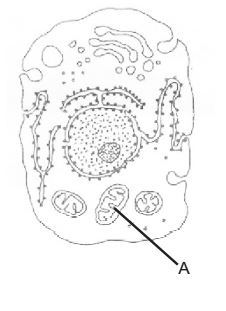Cell-The Unit of Life
- The Golgi complex plays a major role
-
View Hint View Answer Discuss in Forum
Golgi apparatus plays a major role in post translational modification of proteins forming glycoprotein and glycosidation of lipid forming glycolipids. A number of proteins and lipids synthesised on endoplasmic reticulum (rough and smooth respectively) are modified in the cisternae of the Golgi apparatus before they are released from the trans face.
Correct Option: C
Golgi apparatus plays a major role in post translational modification of proteins forming glycoprotein and glycosidation of lipid forming glycolipids. A number of proteins and lipids synthesised on endoplasmic reticulum (rough and smooth respectively) are modified in the cisternae of the Golgi apparatus before they are released from the trans face.
- A major site for synthesis of lipids is :
-
View Hint View Answer Discuss in Forum
The smooth endoplasmic reticulum is the major site for synthesis of lipid. In animal cells lipid like steroidal hormones are synthesised in SER.
Correct Option: A
The smooth endoplasmic reticulum is the major site for synthesis of lipid. In animal cells lipid like steroidal hormones are synthesised in SER.
- Which of the following type of plastids does not contain stored food material?
-
View Hint View Answer Discuss in Forum
Chromoplasts are non-photosynthetic coloured plastids which synthesise and store carotenoid pigmentes. They, therefore, appear orange red and yellow whereas amyloplast (store starch), aleuroplast (store proteins) and elaioplast (store oil droplets and fats) are leucoplasts colourless plastids.
Correct Option: B
Chromoplasts are non-photosynthetic coloured plastids which synthesise and store carotenoid pigmentes. They, therefore, appear orange red and yellow whereas amyloplast (store starch), aleuroplast (store proteins) and elaioplast (store oil droplets and fats) are leucoplasts colourless plastids.
- Select the alternative giving correct identification and function of the organelle ‘A’ in the diagram

-
View Hint View Answer Discuss in Forum
Fig., (A) shows the cell organelle mitochondria. The mitochondria are bounded by two membranes, i.e., outer membrane and inner membrane. Mitochondria are referred as “powerhouse” of the cell as they produce 95% of ATP. This energy is produced during the break down of food molecules which involve glycolysis, oxidative decarboxylation and oxidative phosphorylation (Kreb’s cycle and respiratory chain).
Correct Option: B
Fig., (A) shows the cell organelle mitochondria. The mitochondria are bounded by two membranes, i.e., outer membrane and inner membrane. Mitochondria are referred as “powerhouse” of the cell as they produce 95% of ATP. This energy is produced during the break down of food molecules which involve glycolysis, oxidative decarboxylation and oxidative phosphorylation (Kreb’s cycle and respiratory chain).
- Which one of the following is not considered as a part of the endomembrane system?
-
View Hint View Answer Discuss in Forum
Except peroxisome the remaining three and ER are the parts of endomembrane system.
Correct Option: B
Except peroxisome the remaining three and ER are the parts of endomembrane system.

